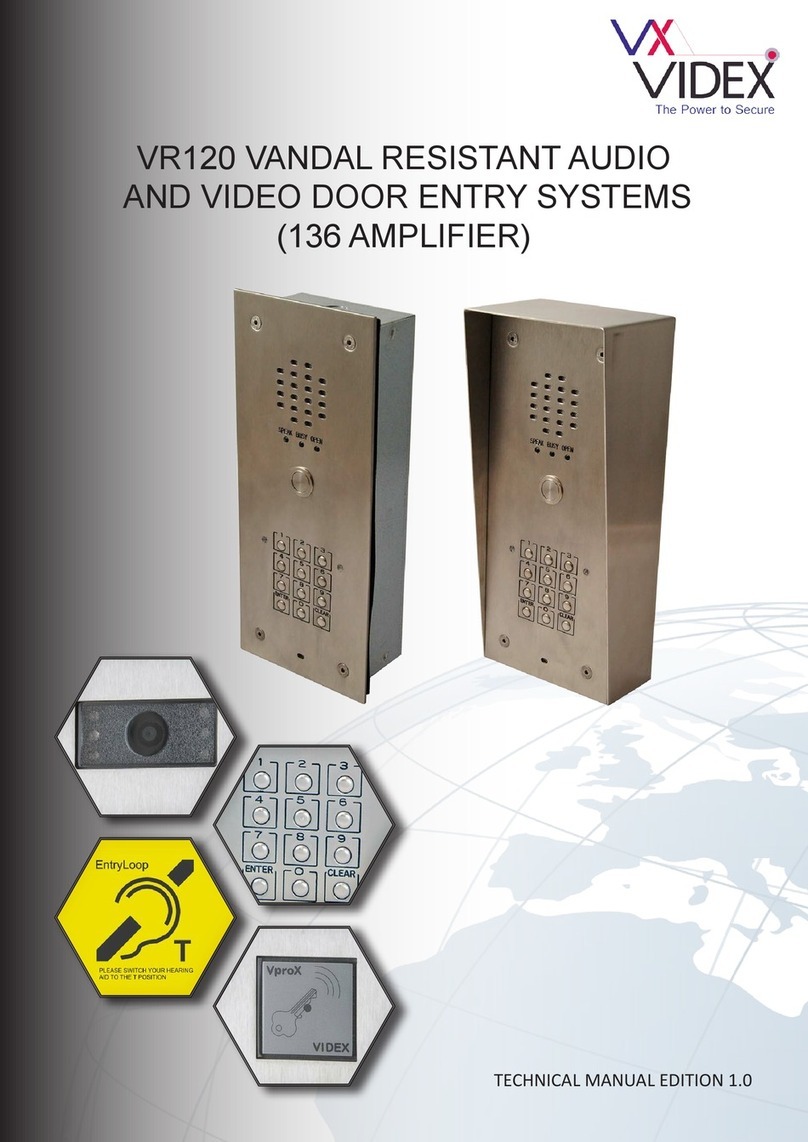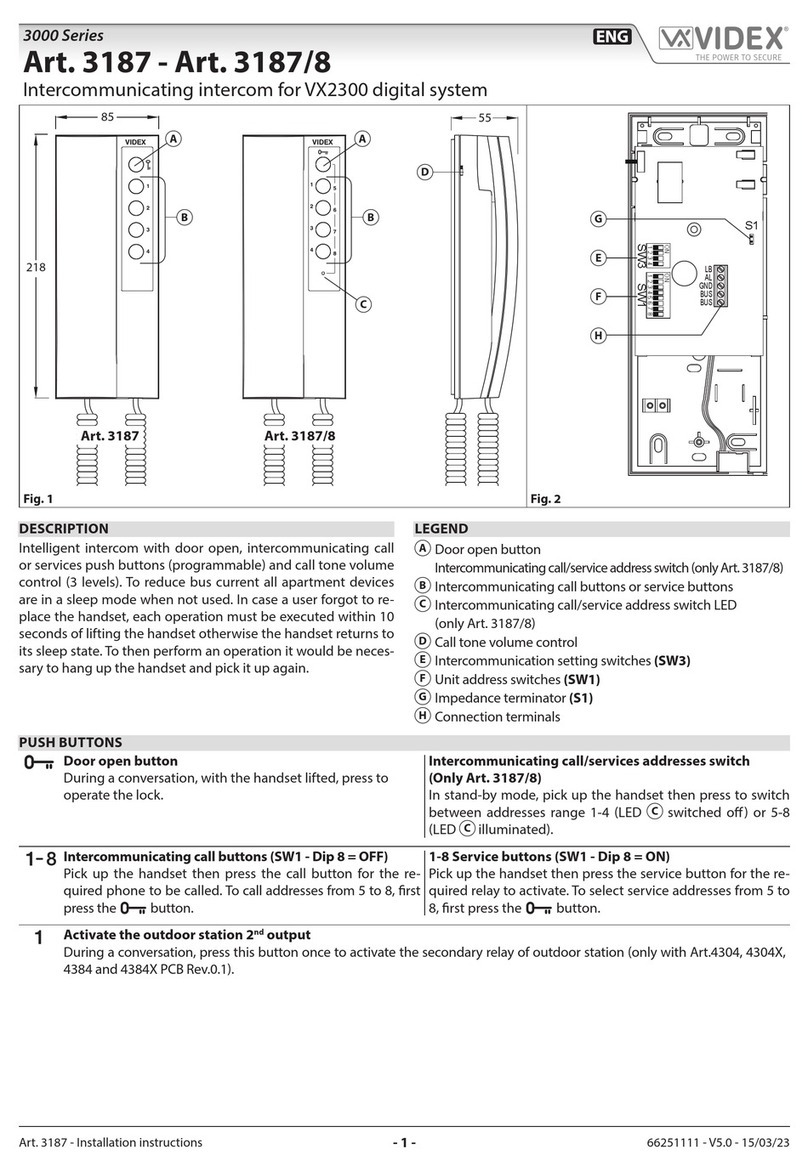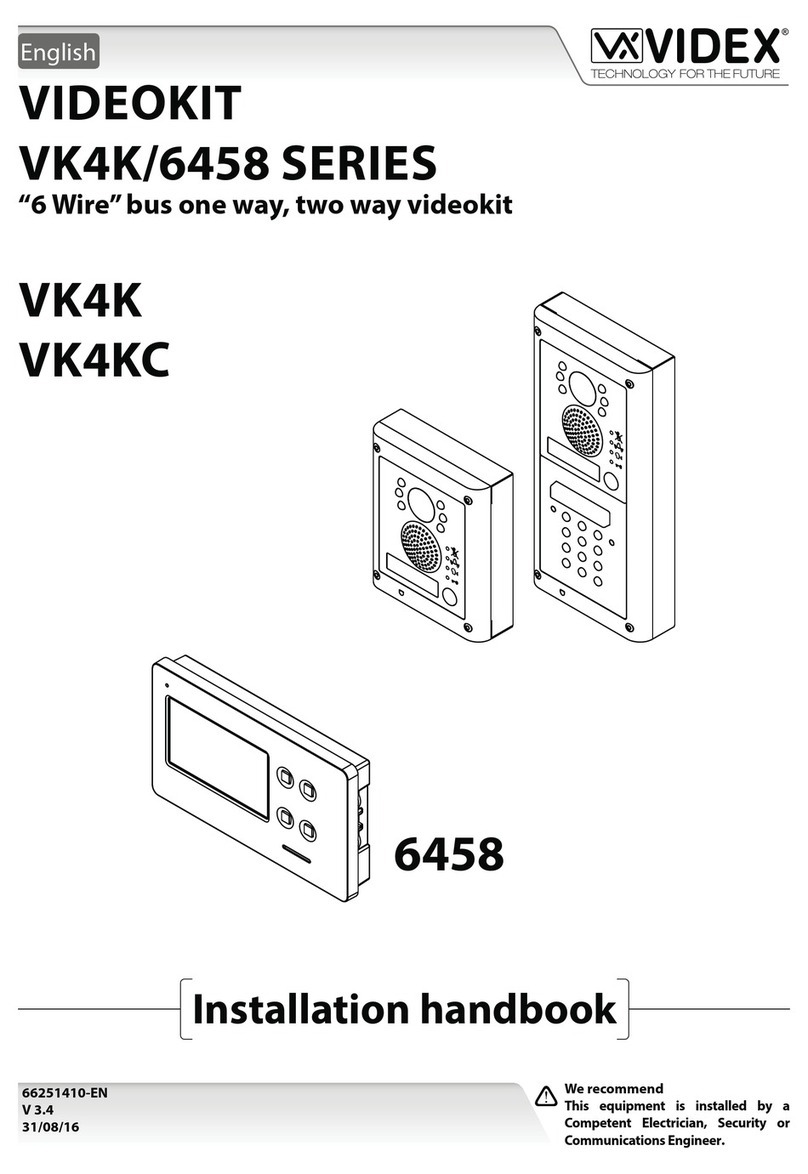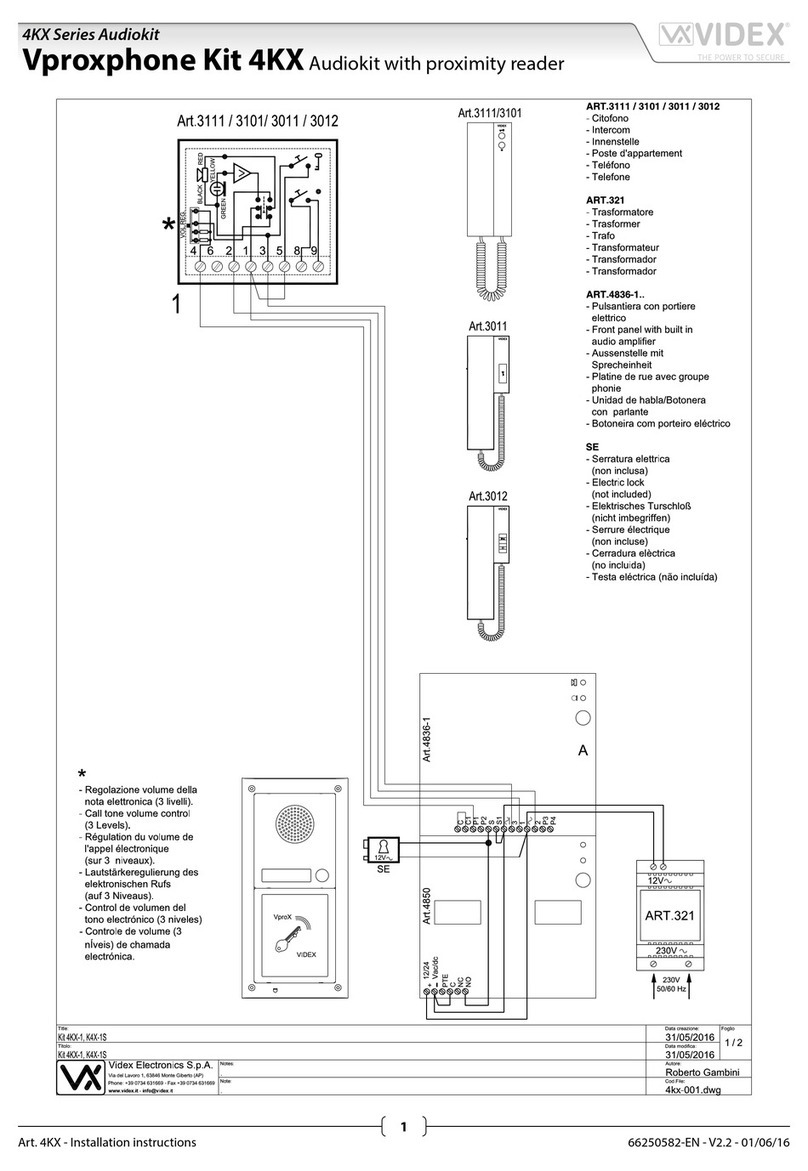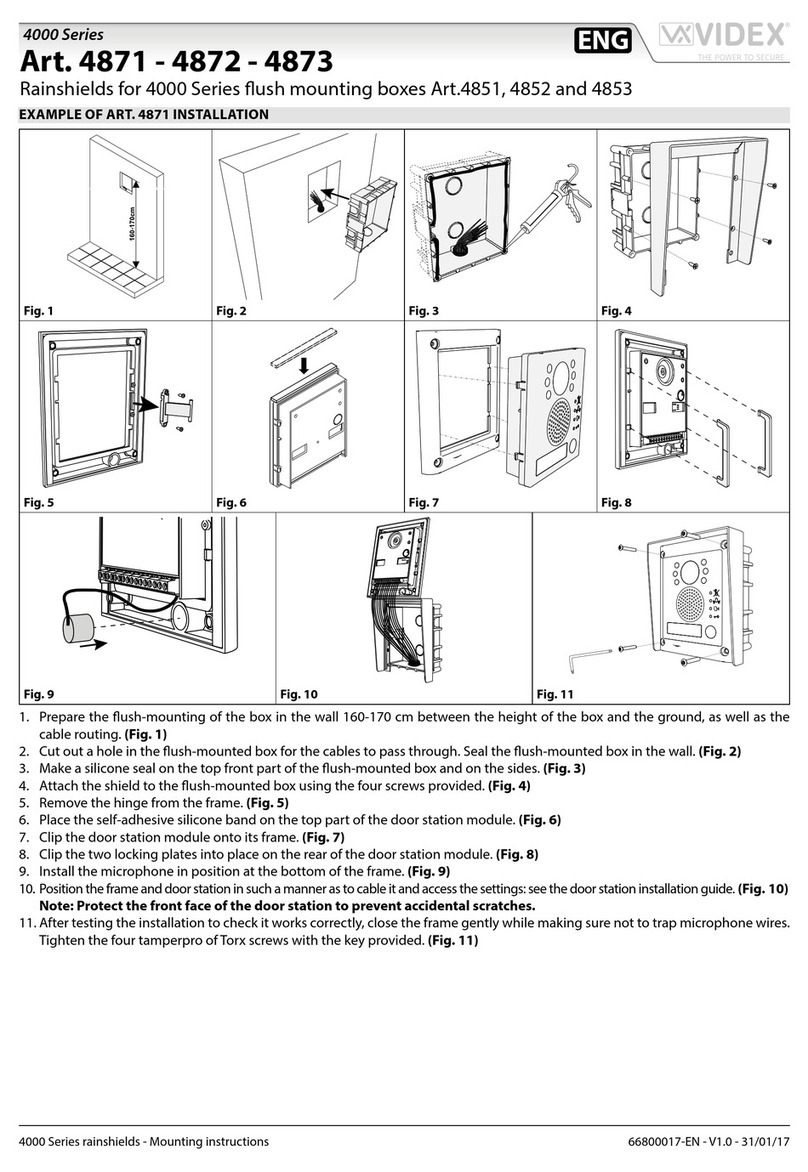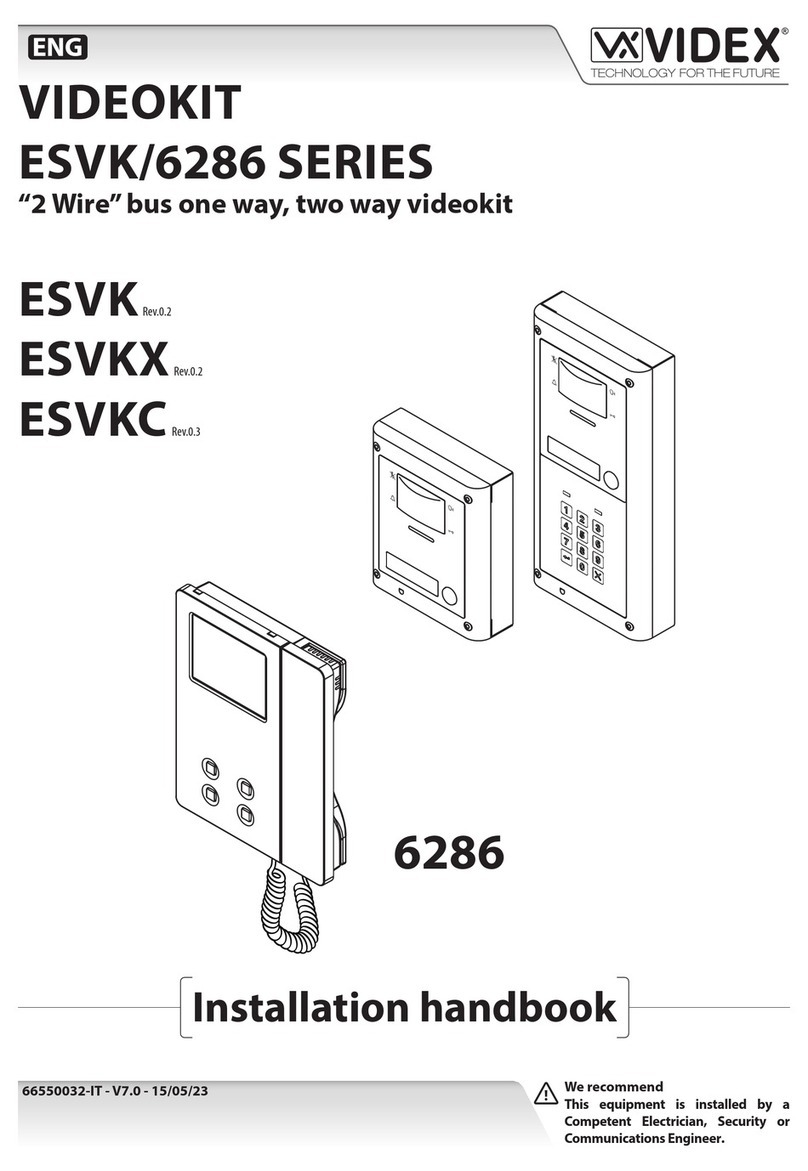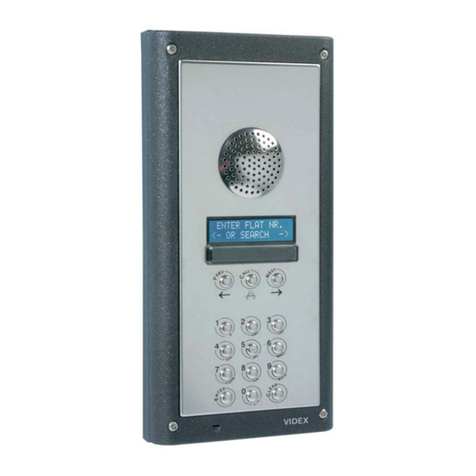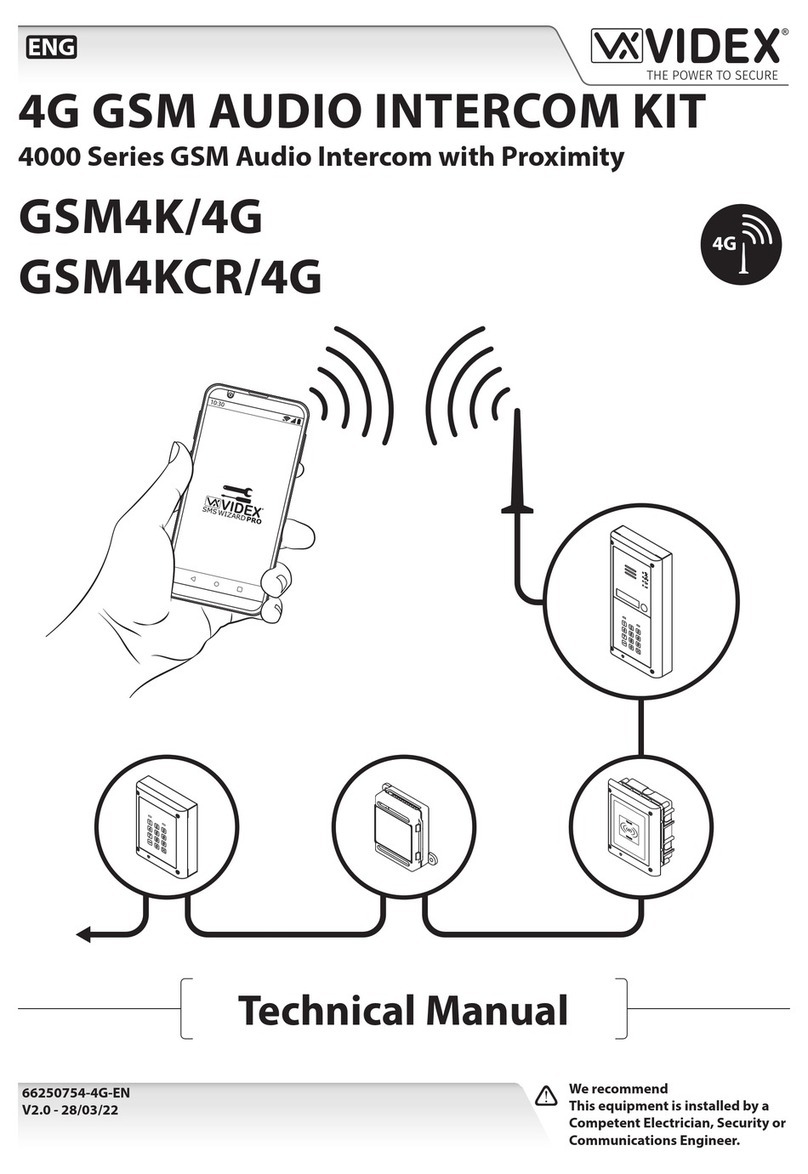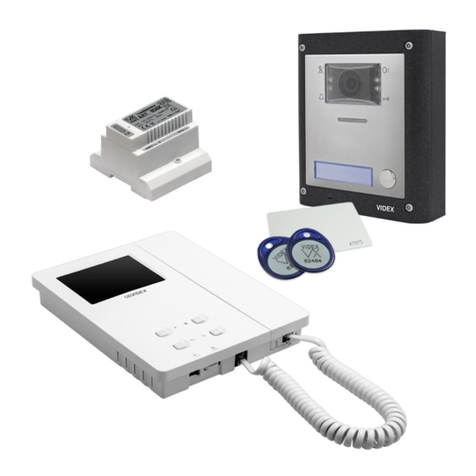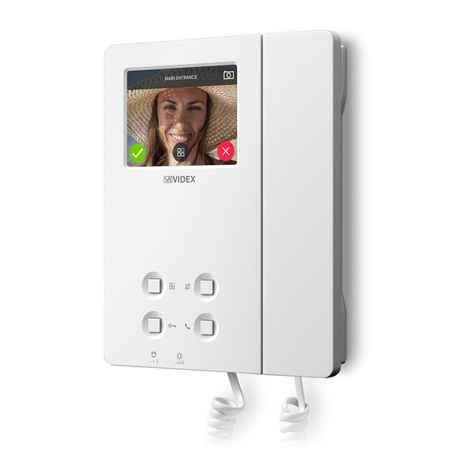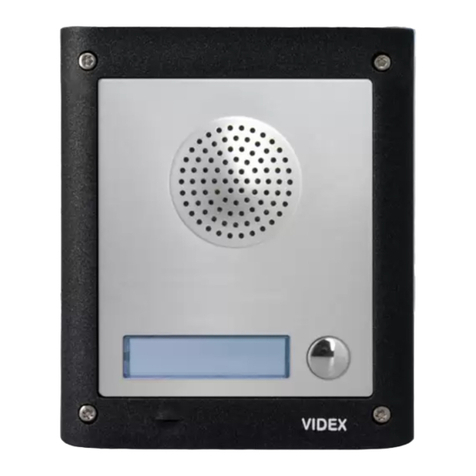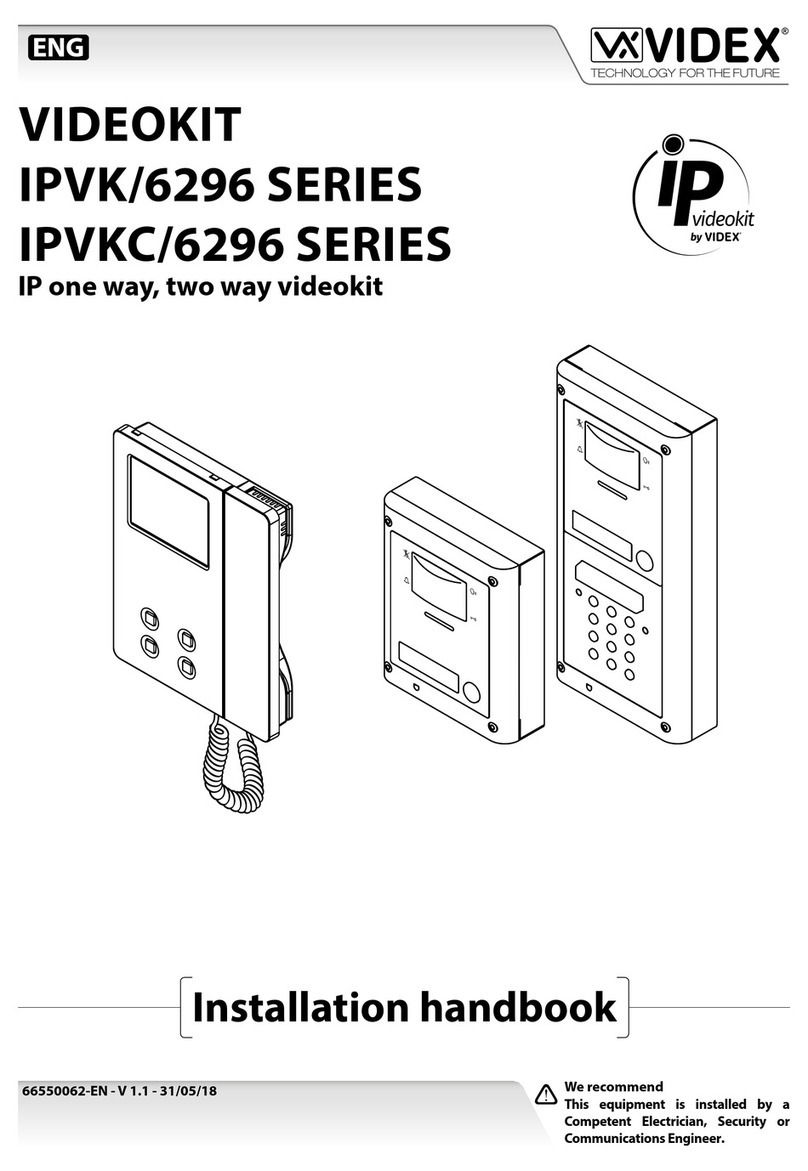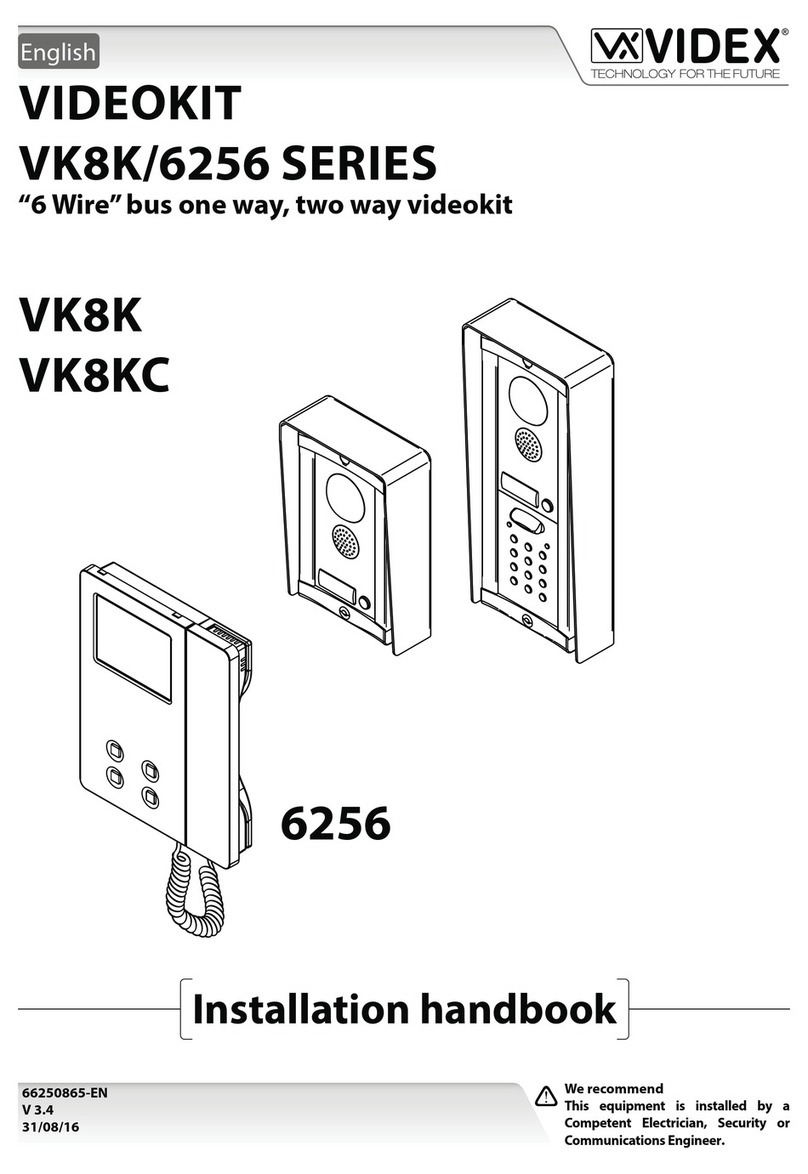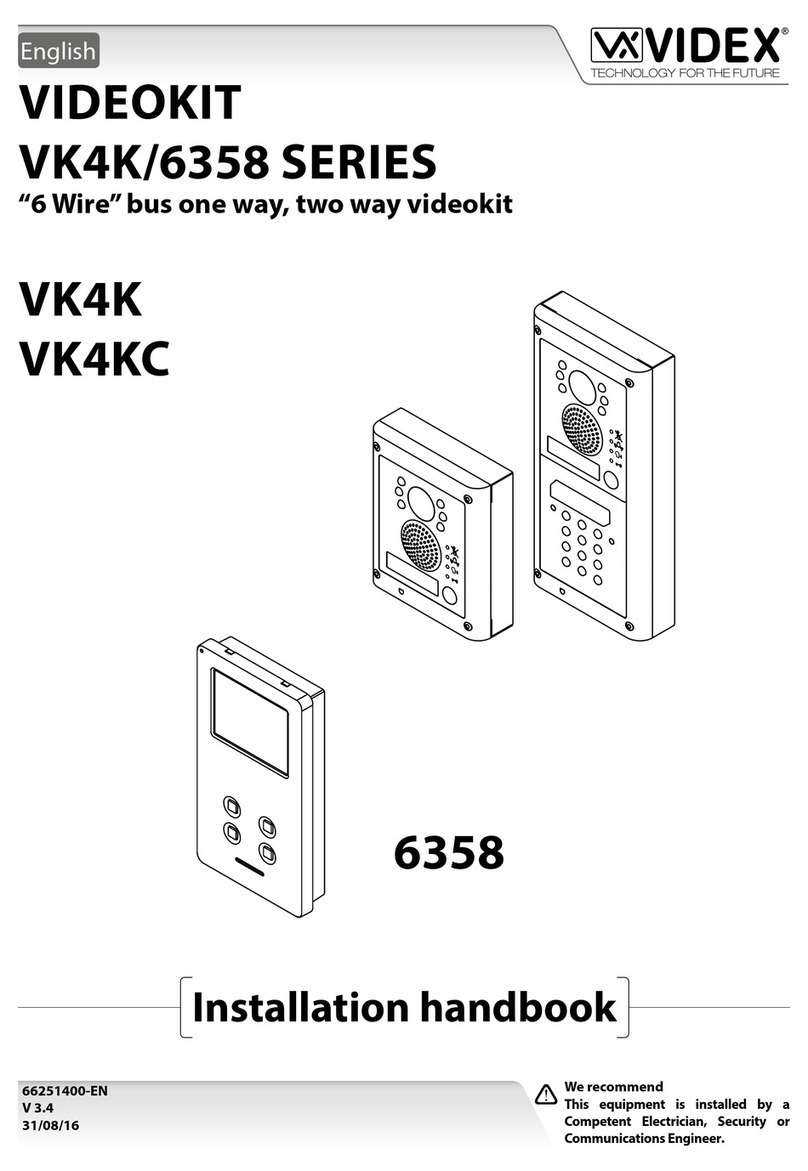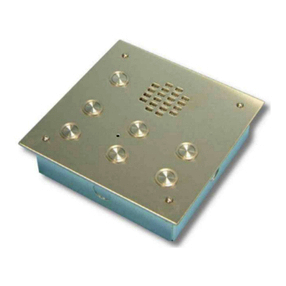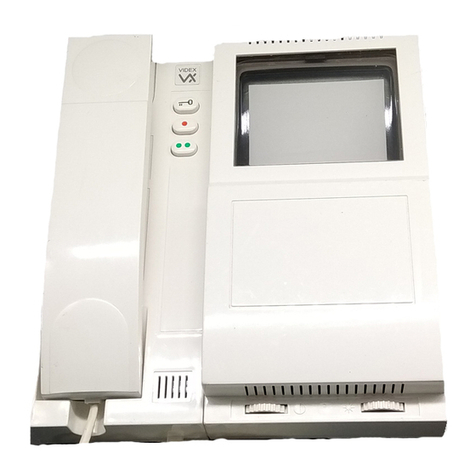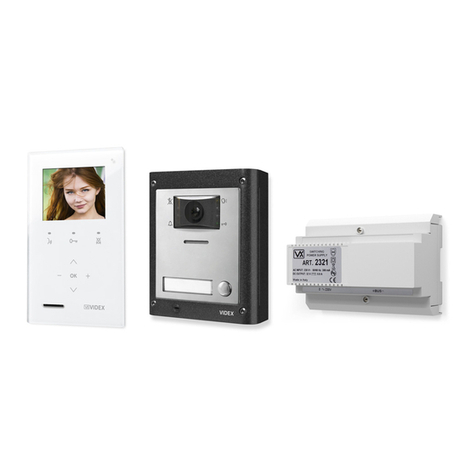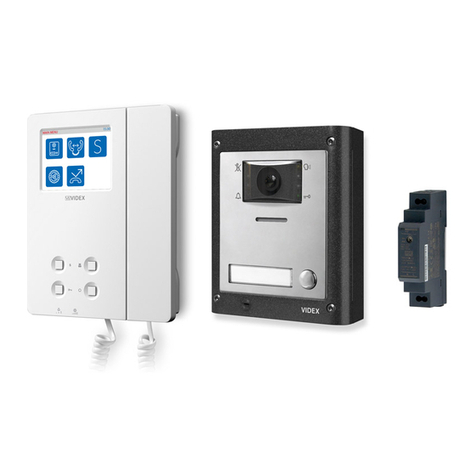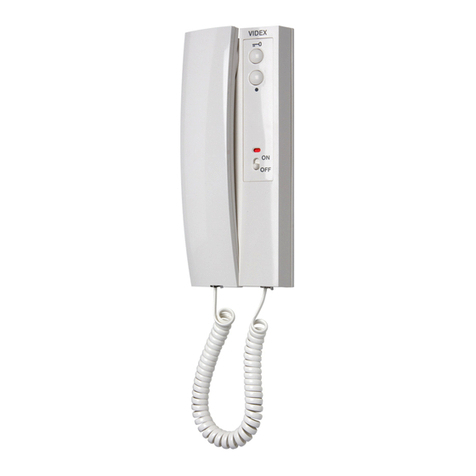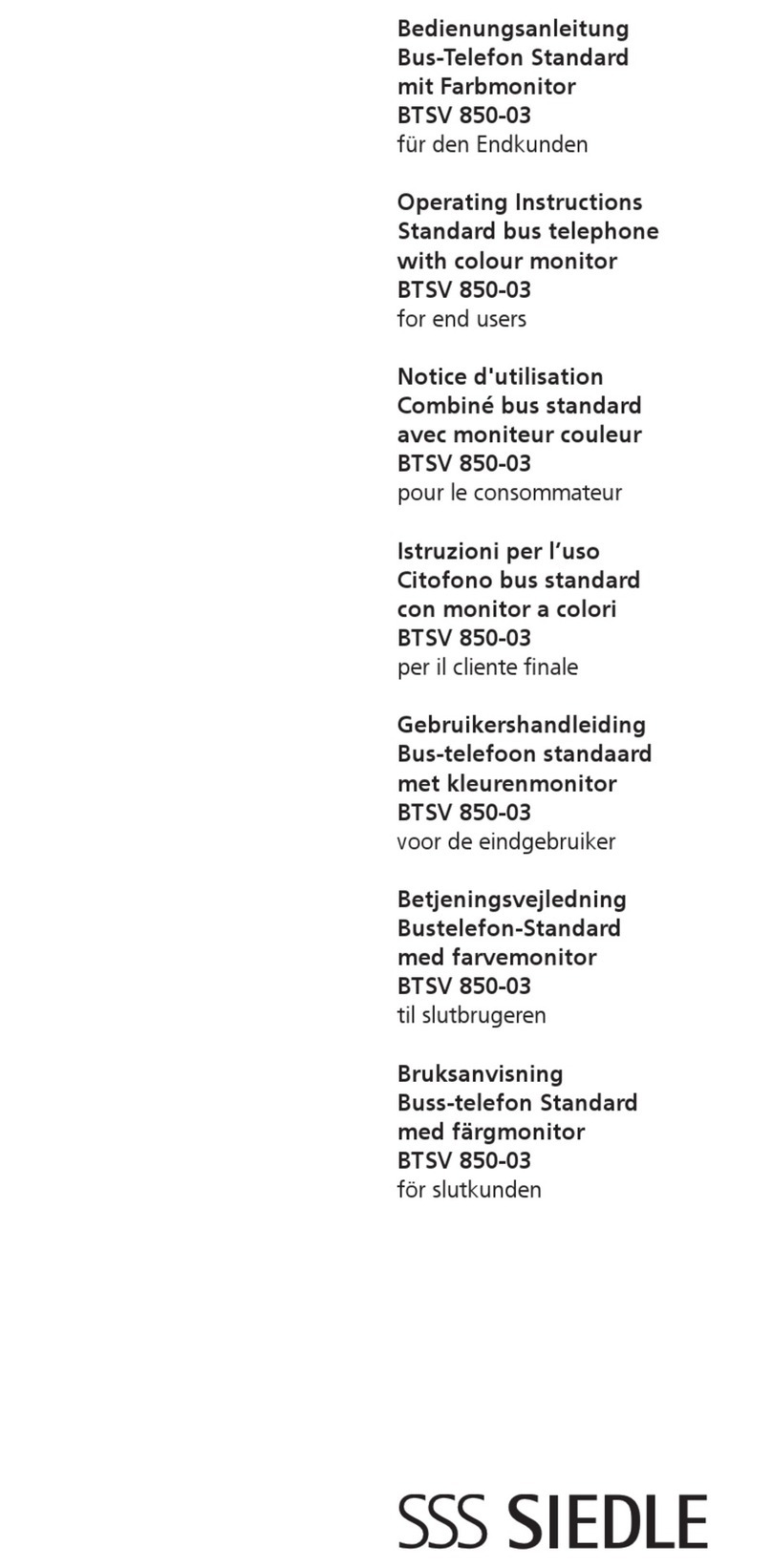
66251850 - V2.7 - 15/05/21
- 9 -
Serie 4000
Art.4384/4384X - Istruzioni di installazione
PROGRAMMAZIONE
La programmazione consiste nei seguenti settaggi:
• Il numero del dispositivo (1..15);
• Il tempo di apertura porta (2 o 6 secondi);
• Il tempo di apertura porta (1 o 2 minuti);
• Ordine indirizzi;
• Selezione telecamera principale per le versioni Art.4384 oppure la modalità di programmazione per le versioni Art.4384X.
Le impostazioni vengono eettuate tramite il dip-switch a 8 vie (riferimento LFig. 2) accessibile nella parte posteriore del modulo.
PROGRAMMAZIONE DEL NUMERO DI DISPOSITIVO
Switch Nr.1 Nr.2 Nr.3 Nr.4 ID
ON
1 3 5 72 4 6 8 OFF OFF OFF OFF 1
ON
1 3 5 72 4 6 8 ON OFF OFF OFF 2
ON
1 3 5 72 4 6 8 OFF ON OFF OFF 3
ON
1 3 5 72 4 6 8 ON ON OFF OFF 4
ON
1 3 5 72 4 6 8 OFF OFF ON OFF 5
ON
1 3 5 72 4 6 8 ON OFF ON OFF 6
ON
1 3 5 72 4 6 8 OFF ON ON OFF 7
ON
1 3 5 72 4 6 8 ON ON ON OFF 8
ON
1 3 5 72 4 6 8 OFF OFF OFF ON 9
ON
1 3 5 72 4 6 8 ON OFF OFF ON 10
ON
1 3 5 72 4 6 8 OFF ON OFF ON 11
ON
1 3 5 72 4 6 8 ON OFF ON ON 12
ON
1 3 5 72 4 6 8 OFF OFF ON ON 13
ON
1 3 5 72 4 6 8 ON OFF ON ON 14
ON
1 3 5 72 4 6 8 OFF ON ON ON 15
ON
1 3 5 72 4 6 8 ON ON ON ON 16
PROGRAMMAZIONE DEL TEMPO DI APERTURA PORTA
Switch Nr.5 Impostazione
ON
1 3 572 4 6 8 OFF = 2 secondi
ON
1 3 572 4 6 8 ON = 6 secondi
PROGRAMMAZIONE DEL TEMPO DI CONVERSAZIONE
Switch Nr.6 Impostazione
ON
1 3 5 72 4 68OFF = 1 minuto
ON
1 3 5 72 4 68ON = 2 minuti
PROGRAMMAZIONE ORDINE INDIRIZZI
Switch Nr.7 Impostazione
Matrice pulsanti
Pulsanti incorporati
ON
1 3 5 72 4 6 8 OFF = 1 - 40 = 1, 2
ON
1 3 5 72 4 6 8 ON = 41 - 80 = 41, 42
PROGRAMMAZIONE SELEZIONE TELECAMERA PRINCIPALE
SOLO VERSIONI ART.4384
Switch Nr.8 Impostazione
ON
1 3 5 72 4 6 8OFF = Telecamera principale interna
ON
1 3 5 72 4 6 8ON = Telecamera principale esterna
MODALITÀ DI PROGRAMMAZIONE SOLOVERSIONI ART.4384X
Switch Nr.8 Impostazione
ON
1 3 5 72 4 6 8OFF Modalità di programmazione
"Standard"
ON
1 3 5 72 4 6 8ON Modalità di programmazione
"Avanzata"
Lo switch 8 imposta la modalità di programmazione: "Standard"
(switch in posizione OFF) o "Avanzata" (switch in posizione ON).
In modalità "Standard" sono valide le impostazioni eettuate
tramite gli switch da 1 a 7.
In modalità "Avanzata" sono valide le programmazioni fatte tra-
mite il programma per PC "VX2X00 Programmer" collegato via
RS485 del dispositivo attraverso l'interfaccia Art.481.
Si prega di notare che nel secondo caso la programmazione
eettuata tramite gli switch da 1 a 7 sarà ignorata.
Art.4384 Portiere elettrico con telecamera incorporata
Art.4384X Portiere elettrico con telecamera e lettore di prossimità incorporati
